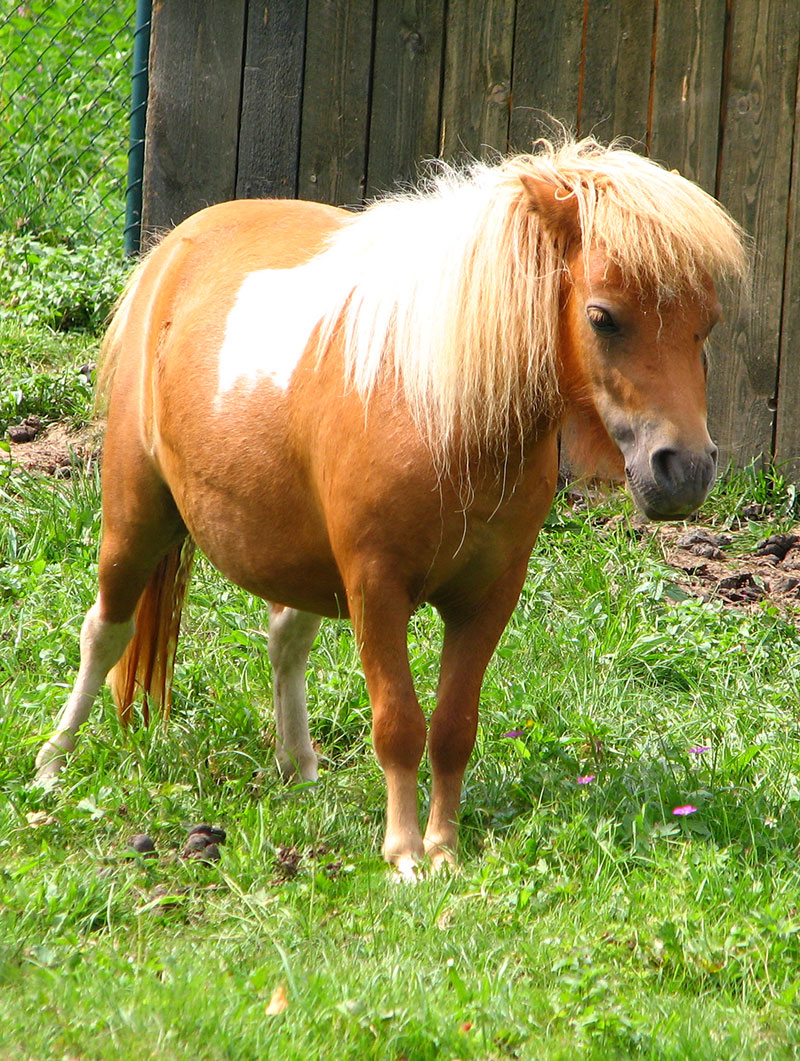Shetland Pony
Equus caballus
Description:
A Shetland pony is a small variety of horse. It has a stocky, muscular body with a shaggy coat. The coat can come in a variety of colors, but the most common are shades of black and brown.
Size:
This type of pony weighs between 300 and 500 pounds (136.1-226.8). Shetland ponies stand no taller than 11.2 hands (46 inches/116.8 cm) at the withers (shoulders).
Adaptations:
- Horses’ large eyes are set on the side of their heads so they can see nearly all the way around their bodies.
- Horses’ ears swivel separately so they can determine the exact location of a sound.
- The strong legs of a horse enable it to run very quickly to escape predators.
- The stocky stance and sure-footedness of Shetland ponies historically made them useful for working in mines.
Diet:
At Cosley Zoo, the Shetland pony’s diet consists of a commercial equine diet and hay.
Reproduction:
Ponies have a gestation period of 11 months. One baby (foal) is born at a time. Twins are possible but quite uncommon. A healthy foal can stand up an hour after it is born. Foals are left with their mothers until they are 4-5 months of age, at which time they are weaned.
Shelter and space needs:
Although they can tolerate cold weather fairly well, horses do need shelter from the wind and rain. During the day, Cosley Zoo’s horses share an outdoor yard. They are brought indoors during the day in the case of extreme weather conditions such as heavy rain or lightning. Each evening the horses are led into their individual stalls inside the barn to spend the night.
Life expectancy:
Shetland ponies live an average of 20-25 years.
Relationship with man:
Known to be small and hardy, Shetland ponies were developed for use in coal mines to pull heavy loads in very small spaces. Today, Shetland ponies are often used as companion animals for children because of their easygoing nature. They are also used as show animals.
Fun Facts:
- The Shetland pony was originally developed in the Shetland Islands about 100 miles north of Scotland.
- Ponies, along with other types of horses, can sleep standing up, and often do.
- The height of a horse is measured in hands. Originally a “hand” was equal to the width of a human hand, but the measurement has since been standardized. One hand is now equal to four inches.
- Not all horses wear shoes! Shoes are only necessary to protect the feet of horses that often walk on hard surfaces. Cosley Zoo’s Shetland pony does not wear shoes, but he does have his hooves trimmed several times a year by a farrier.






